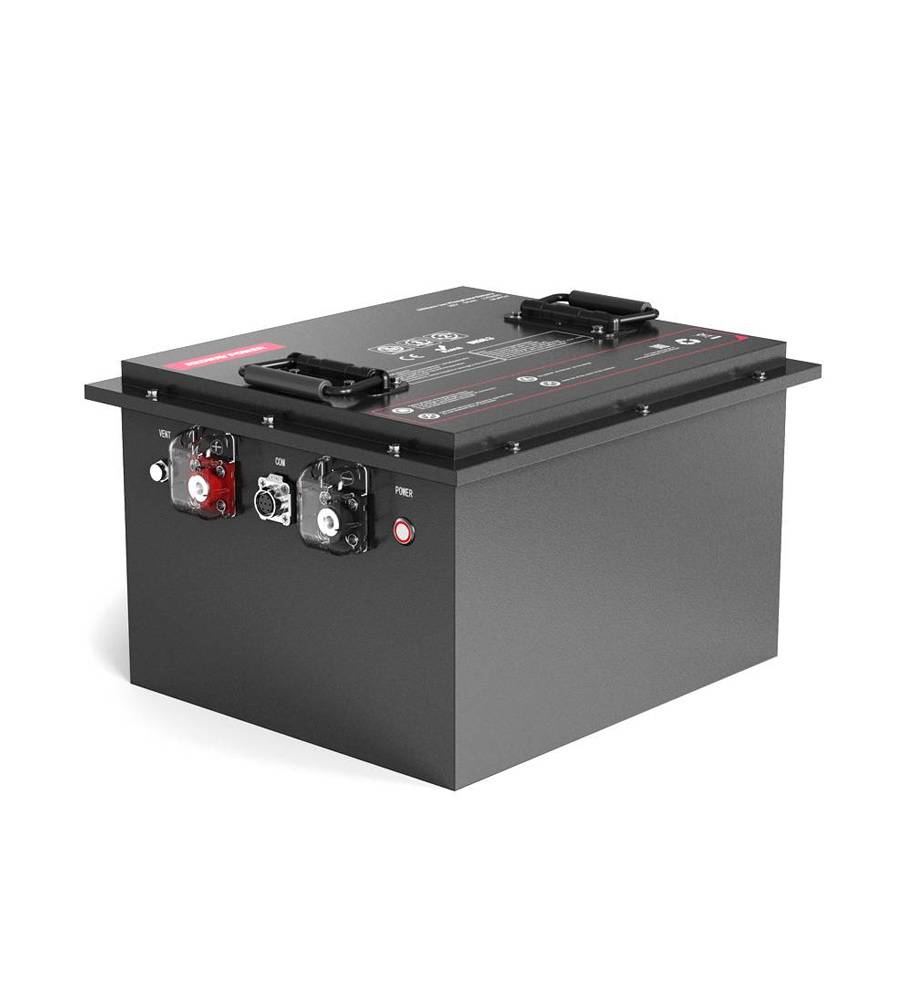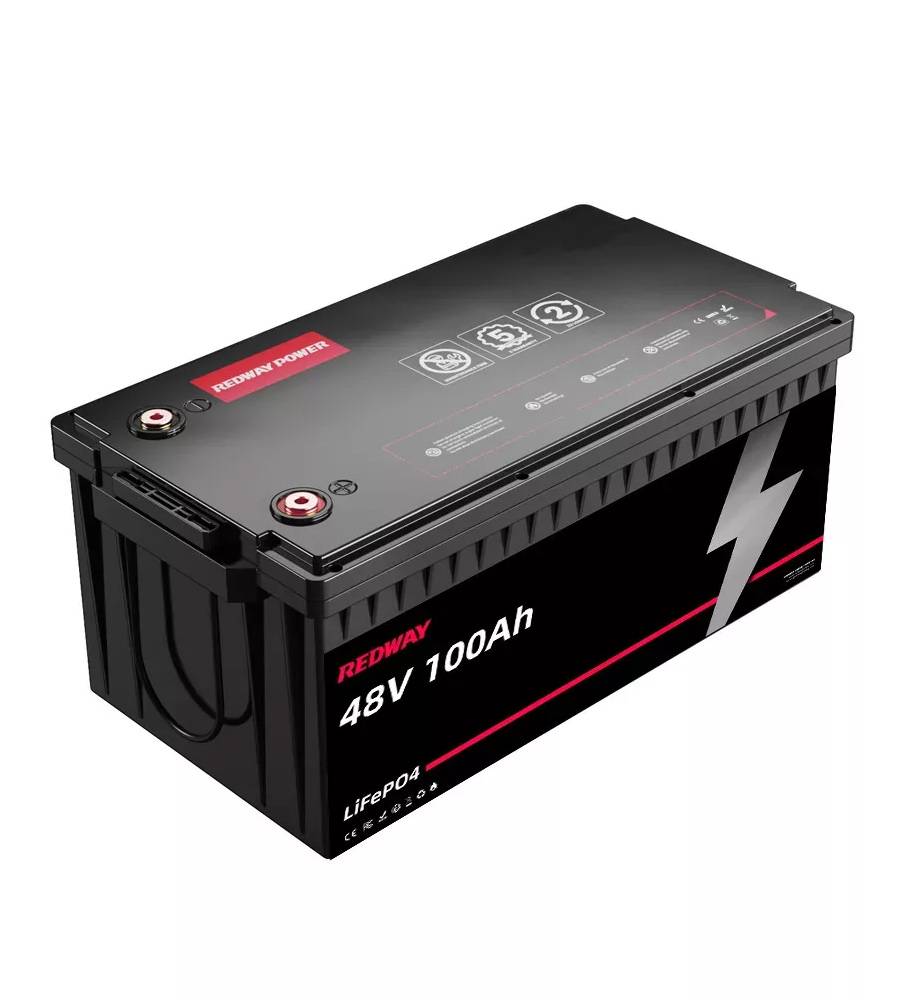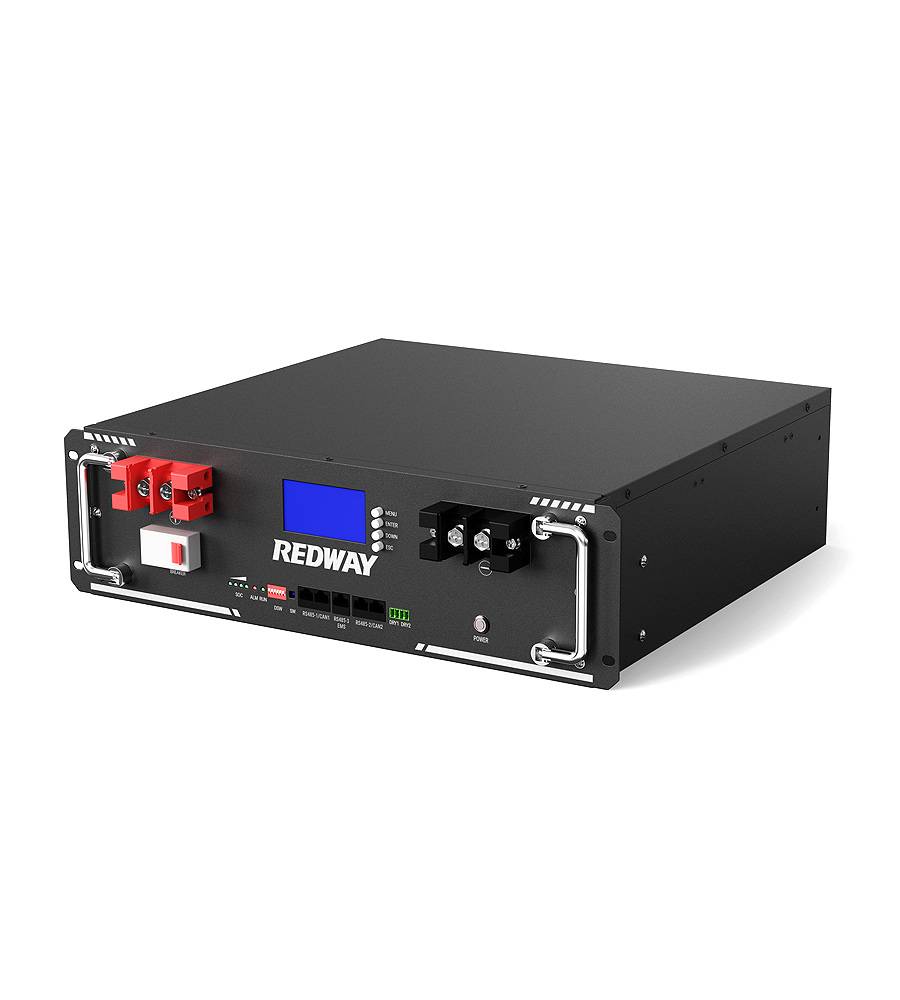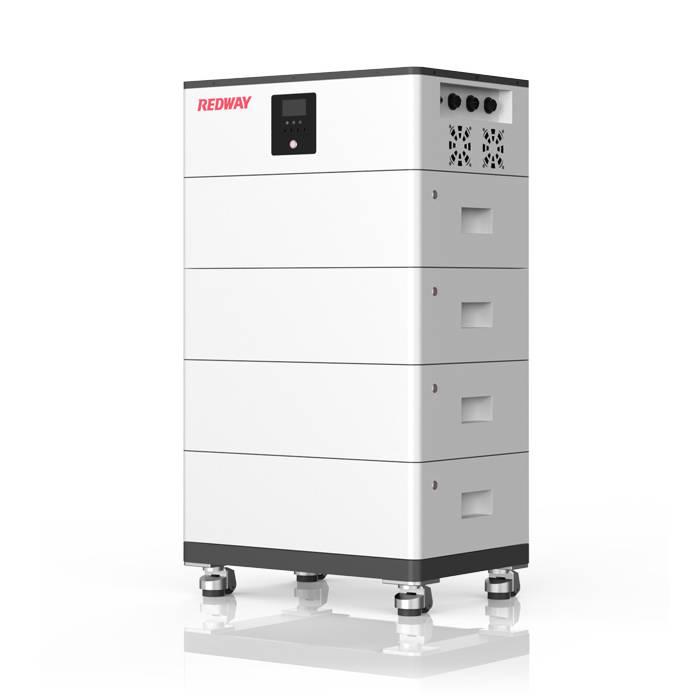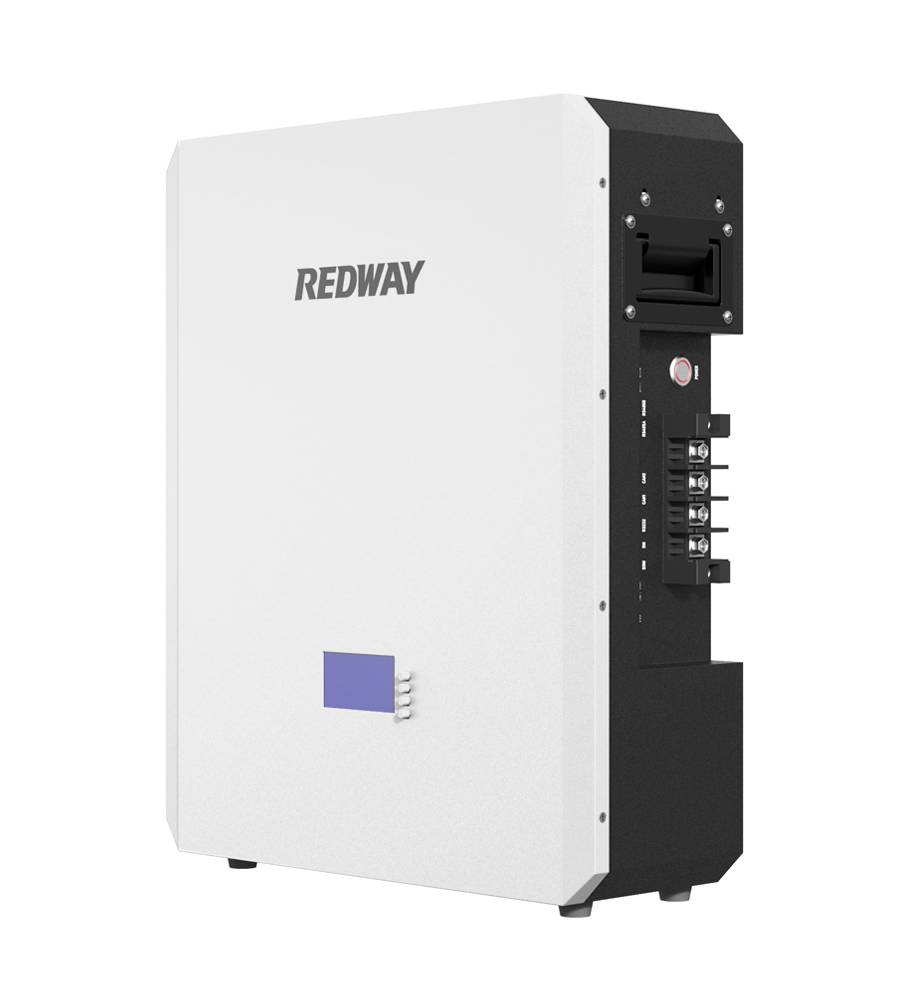- Forklift Lithium Battery
-
48V
- 48V 210Ah
- 48V 300Ah
- 48V 420Ah (949 x 349 x 569 mm)
- 48V 420Ah (950 x 421 x 450 mm)
- 48V 456Ah
- 48V 460Ah (830 x 630 x 590 mm)
- 48V 460Ah (950 x 421 x 450 mm)
- 48V 460Ah (800 x 630 x 600 mm)
- 48V 460Ah (820 x 660 x 470 mm)
- 48V 500Ah
- 48V 560Ah (810 x 630 x 600 mm)
- 48V 560Ah (950 x 592 x 450 mm)
- 48V 600Ah
- 48V 630Ah
-
48V
- Lithium Golf Cart Battery
- 12V Lithium Battery
12V 150Ah Lithium RV Battery
Bluetooth App | BCI Group 31
LiFePO4 Lithium
Discharge Temperature -20°C ~ 65°C
Fast Charger 14.6V 50A
Solar MPPT Charging - 24V Lithium Battery
- 36V Lithium Battery
- 48V Lithium Battery
-
48V LiFePO4 Battery
- 48V 50Ah
- 48V 50Ah (for Golf Carts)
- 48V 60Ah (8D)
- 48V 100Ah (8D)
- 48V 100Ah
- 48V 100Ah (Discharge 100A for Golf Carts)
- 48V 100Ah (Discharge 150A for Golf Carts)
- 48V 100Ah (Discharge 200A for Golf Carts)
- 48V 150Ah (for Golf Carts)
- 48V 160Ah (Discharge 100A for Golf Carts)
- 48V 160Ah (Discharge 160A for Golf Carts)
-
48V LiFePO4 Battery
- 60V Lithium Battery
-
60V LiFePO4 Battery
- 60V 20Ah
- 60V 30Ah
- 60V 50Ah
- 60V 50Ah (Small Size / Side Terminal)
- 60V 100Ah (for Electric Motocycle, Electric Scooter, LSV, AGV)
- 60V 100Ah (for Forklift, AGV, Electric Scooter, Sweeper)
- 60V 150Ah (E-Motocycle / E-Scooter / E-Tricycle / Tour LSV)
- 60V 200Ah (for Forklift, AGV, Electric Scooter, Sweeper)
-
60V LiFePO4 Battery
- 72V~96V Lithium Battery
- Rack-mounted Lithium Battery
- E-Bike Battery
- All-in-One Home-ESS
- Wall-mount Battery ESS
-
Home-ESS Lithium Battery PowerWall
- 24V 100Ah 2.4kWh PW24100-S PowerWall
- 48V 50Ah 2.4kWh PW4850-S PowerWall
- 48V 50Ah 2.56kWh PW5150-S PowerWall
- 48V 100Ah 5.12kWh PW51100-F PowerWall (IP65)
- 48V 100Ah 5.12kWh PW51100-S PowerWall
- 48V 100Ah 5.12kWh PW51100-H PowerWall
- 48V 200Ah 10kWh PW51200-H PowerWall
- 48V 300Ah 15kWh PW51300-H PowerWall
PowerWall 51.2V 100Ah LiFePO4 Lithium Battery
Highly popular in Asia and Eastern Europe.
CE Certification | Home-ESS -
Home-ESS Lithium Battery PowerWall
- Portable Power Stations
How Can Best Practices Enhance Electric Forklift Operations?

Implementing best practices in electric forklift operations is crucial for ensuring safety, efficiency, and longevity of equipment. This includes following guidelines for safe battery handling, adhering to recommended maintenance schedules, optimizing battery usage in warehouses, and establishing standard operating procedures for battery charging.
What Are the Best Practices for Electric Forklift Operations?
Best practices include conducting pre-operational checks before each shift, maintaining clear visibility while operating, adhering to weight limits, and ensuring proper load handling techniques. These practices are essential to prevent accidents and ensure smooth operations.Chart Title: Best Practices Overview
| Practice | Description |
|---|---|
| Pre-Operational Checks | Inspect forklifts before use |
| Clear Visibility | Ensure line of sight is unobstructed |
| Weight Limits | Do not exceed forklift capacity |
| Proper Load Handling | Secure loads to prevent shifting |
How Can Safe Battery Handling Guidelines Improve Safety?
Safe battery handling guidelines involve understanding potential hazards associated with batteries, using appropriate personal protective equipment (PPE), and following proper handling techniques to prevent accidents or injuries during operation or maintenance.Chart Title: Safe Battery Handling Guidelines
| Guideline | Description |
|---|---|
| Understand Hazards | Recognize risks associated with batteries |
| Use PPE | Wear gloves, goggles, and other safety gear |
| Follow Proper Techniques | Handle batteries carefully to avoid spills |
What Are the Recommended Maintenance Schedules for Batteries?
Recommended maintenance schedules include daily checks such as inspecting fluid levels and connections, weekly inspections of terminals and cables, and monthly evaluations of overall battery health. Regular maintenance helps extend battery life and ensures optimal performance.Chart Title: Maintenance Schedule Overview
| Frequency | Task |
|---|---|
| Daily | Check fluid levels and connections |
| Weekly | Inspect terminals and cables |
| Monthly | Evaluate overall battery health |
How Can Efficiency Tips Enhance Battery Usage in Warehouses?
Efficiency tips include implementing opportunity charging practices to minimize deep discharge cycles, maintaining optimal charging conditions to prevent overheating, and ensuring proper ventilation in charging areas to dissipate harmful gases.Chart Title: Efficiency Tips for Battery Usage
| Tip | Description |
|---|---|
| Opportunity Charging | Charge batteries frequently throughout the day |
| Optimal Charging Conditions | Avoid overheating during charging |
| Proper Ventilation | Ensure adequate airflow in charging areas |
What Are the Standard Operating Procedures for Battery Charging?
Standard operating procedures (SOPs) for battery charging involve setting up dedicated charging stations, following manufacturer-recommended charging protocols, ensuring that safety measures are in place during charging sessions, and training personnel on proper procedures.Chart Title: Standard Operating Procedures Overview
| Procedure | Description |
|---|---|
| Set Up Charging Stations | Designate specific areas for charging |
| Follow Charging Protocols | Adhere to manufacturer guidelines |
| Ensure Safety Measures | Implement precautions during charging |
Expert Views
“Adhering to best practices not only enhances safety but also maximizes the efficiency of electric forklift operations; a well-maintained forklift fleet can significantly reduce operational costs.” – Expert from Redway.
Conclusion
Implementing best practices in electric forklift operations is essential for enhancing safety and efficiency while prolonging the lifespan of equipment. By following safe battery handling guidelines, adhering to recommended maintenance schedules, optimizing battery usage in warehouses, and establishing standard operating procedures for battery charging, businesses can achieve significant operational improvements.
FAQ Section
- What are the best practices for electric forklift operations?
Best practices include conducting pre-operational checks, maintaining clear visibility while operating, adhering to weight limits, and ensuring proper load handling techniques. - How can safe battery handling guidelines improve safety?
Safe handling guidelines help recognize hazards associated with batteries and promote the use of appropriate personal protective equipment (PPE). - What are the recommended maintenance schedules for batteries?
Daily checks involve inspecting fluid levels; weekly inspections focus on terminals; monthly evaluations assess overall battery health. - How can efficiency tips enhance battery usage in warehouses?
Efficiency tips include using opportunity charging practices, maintaining optimal charging conditions, and ensuring proper ventilation during charging. - What are the standard operating procedures for battery charging?
SOPs involve setting up dedicated charging stations, following manufacturer-recommended protocols, ensuring safety measures during charging sessions, and training personnel on proper procedures.





